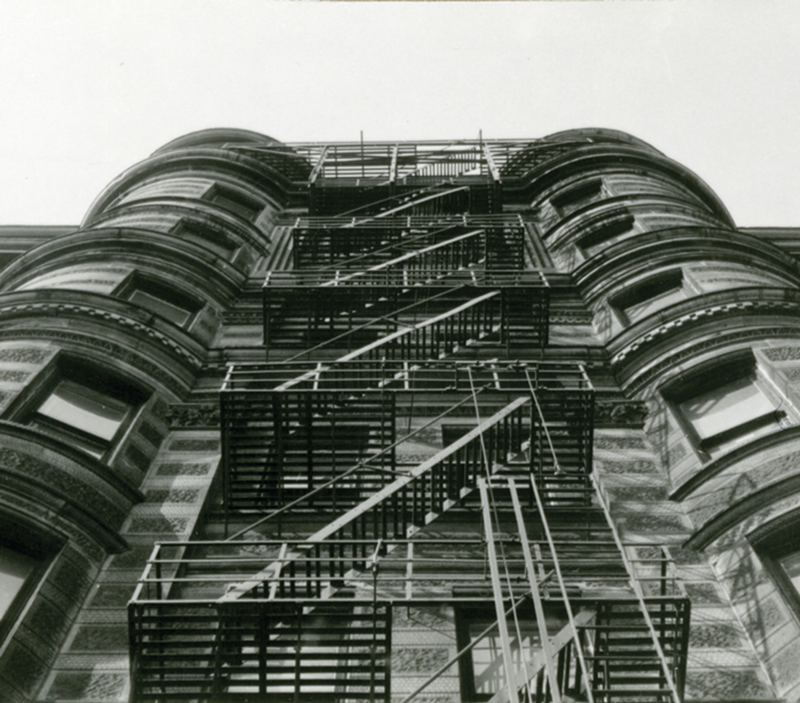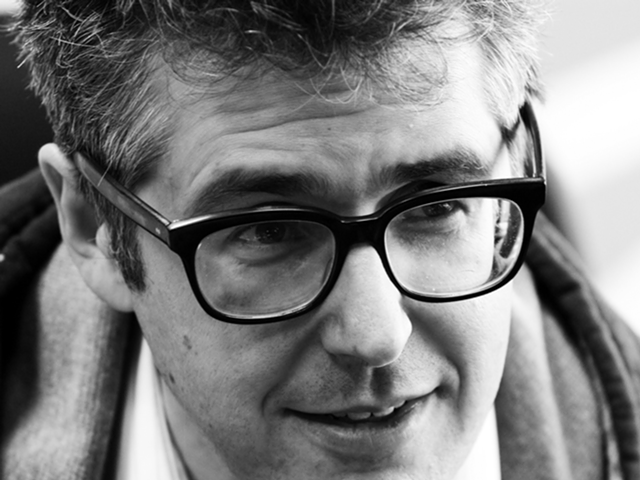It’s hard to have any conversation about Cincinnati’s past without someone bemoaning the impact of I-75 construction in the 1950s.
The West End neighborhood was torn asunder, much of its architecture destroyed and many of its residents uprooted. The urban fabric of the inner city was torn in half, and for what? Trucks and travelers, many of them participants in suburban sprawl, roar through the city day and night — when they’re not stuck in traffic.
When you think about this now, you ask, “Didn’t anybody see it coming? Didn’t anybody know what would be lost?”
As it turns out, someone did: the late George S. Rosenthal. And starting with a reception Wednesday and continuing through Dec. 21, you can see his photographs of the old West End in the FotoFocus Biennial-connected Documenting Cincinnati’s Neighborhoods show at Hebrew Union College’s Skirball Museum and Jacob Rader Marcus Center.
This show features two other photographers besides Rosenthal. One, the late Daniel Ransohoff, is a Cincinnati legend — a social worker who for decades documented the city’s disadvantaged as part of rallying the community to the their needs. The other, Ben Rosen, also deceased, had a long and productive career as a photographer for American Israelite and Catholic Telegraph.
I mean them no disrespect to focus this story on Rosenthal, but his work fascinates me for his prescience. Also, it’s so little known.
A part of the printing/publishing family that owned S. Rosenthal & Co., he had training in and a deep love for photography. He even studied one summer in Chicago under László Moholy-Nagy. At his company, he briefly published an avant-garde magazine called Portfolio — copies will be in the Skirball exhibit.
From 1957 to 1959, under the sponsorship of the Historical and Philosophical Society of Ohio (now the Cincinnati Historical Society), he took roughly 3,600 photographs of West End places, mostly those marked for removal and mostly without people present. He used a 35-mm Leica camera.
His work was turned over to the organization, which in its 1960 Bulletin noted that his eye for “iron work, unusual doorways and windows, front porches, as well as brick and wood construction, served to bring out the best of Mr. Rosenthal’s art photography.”
Rosenthal died in 1967, not yet 45. It’s unclear if his photographs from this project ever had a show. His wife, Jean Bloch, seems to remember a small one at a West End library at the time.
Bloch recalls that Rosenthal would go out early in the morning to shoot. He often would be accompanied by a friend, John Garber. As coincidence would have it, Garber, too, is starting to enjoy a rediscovery; he was an architect responsible for the strikingly modernist St. John Unitarian Church in Clifton.
The two were lifelong friends, she said, attending University School in Avondale together. That school appeared to be an early Montessori one, although a 1975 Cincinnati article said its teacher was told not to use that word because people might think it a strange indoctrination technique.
According to Skirball Museum Director Abby Schwartz, there has been no showing of Rosenthal’s work since it was turned over to the society. It’s kept at the Cincinnati History Library and Archives at the Cincinnati Museum Center.
Schwartz was told about Rosenthal’s project by Regine Ransohoff, Daniel’s sister-in-law. Both men’s archives are at the historical society. A small Skirball contingent began going through contact sheets and negatives, picking what to have scanned and then printed.
It was apparent quickly that Rosenthal’s work was a find.
“(We) were looking not only at images of buildings but also beautiful aesthetic photographs,” Schwartz says. “They began to fall into that category. Some are very focused architectural details, others are images of buildings but there might be cars in them that give us a sense of time and place, the late 1950s. There are ones taken from certain angles that give you a distorted view of buildings. So we started to group them in interesting ways.”
Reading the 1960 Bulletin publication about the historical society’s acceptance of Rosenthal’s photographs, one can see there was hopefulness that accompanied the freeway demolition of a neighborhood viewed at the time as a slum. New housing projects, the article said, would “restore the area to Cincinnati as a respectable residential district.”
But now, these photographs chronicle a loss rather than a new beginning.
The opening reception takes place 5:30-7 p.m. Wednesday at the museum (3101 Clifton Ave., Clifton). The show is up through Dec. 21. For more information, visit fotofocusbiennial.org.
CONTACT STEVEN ROSEN: [email protected]






